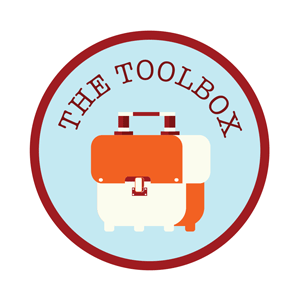As a cartoonist, whenever I meet another scribbler, we usually end up talking about drawing implements: fountain pens, markers, brushes, imported Japanese manga tools. Drawing comics require months or years of focused work to complete a project, and how well your drawing tool holds up to the pressure is essential. Comparing notes can helpful.
For example, drawing with a brush or a high-end fountain pen requires a level of craft. It's a special skill to be able to draw a consistent, rich line with a tool that is built to be flexible.
As an artist and designer, I thought I'd take a look at my current toolbox and take stock of where I am. Is it time to try a new program or process? What's the difference between the tools you learn on and the tools you're an expert with?
In college, I learned to illustrate with black ink via a cheap $2 watercolor brush. Later, I discovered that if you want to be able to make those very small detailed lines that slowly build into thick inky blocks, I'd need to get myself a $25 Winsor Newton Series 7 Watercolor brush (Size 2).
In retrospect, I was always striving to get the controlled shape-building line that is a signature style for illustrators such as Charles Burns + Gerhard.
In 2015, the sable hair used by Winsor Newton faced increased regulation, and became difficult to find in even the best stocked art supply shop. Luckily, I'd already already fell in love with the consistent, even linework of Gluyas Williams, and fogot about the brush.
Micron pens (markers really) are far more portable, and a reliable drawing utensil when you're stealing a minute between projects. Also, it's nice to not have the wait for the ink to dry when you're on a roll. Plus, you can get one for $2.50.
It's curious to me why so many designs that are a perfect fit for InDesign are often assembled in the drawing program, Illustrator.
And yet, even as a drawing program, I remember needing to largely adjust the way I thought about drawing to fit processes of Illustrator. As a result, vector drawing always seemed awkward to me. The newest Creative Cloud version of Illustrator I've found to be an improvement, however by then, I'd started using Affinity Designer.
Affinity Designer is an all-in-one design program out of the UK. For $50 you can download a copy (with no Creative Cloud-like upgrade costs). It's also has a pen tool that is simply fun to draw with.
I used to buy those those big, 9" x 10" sketchbooks with the solid black hardcover—easily found in any bookstore or gift shop.
Lately, I make my own sketchbooks from the paper that I've collected over the years. I'll put one of my illustrations on the cover, sew the pages together and trim them on my 12" PERFECT® paper cutter. I can make books of all different sizes.
These books are sometimes used for preparatory drawing, but also for to-do lists or scratch paper. They get placed in the paper recycling when filled—in the winter I throw them in the fireplace.
If a drawing or idea is worth keeping, I'll save the page and bind them all together when there are enough for a book. Sometimes, it's nice to flip through old projects and drawings to see how much you've improved.
Technically Quark was the first design program I used as a designer, but InDesign has driven my career. The first version I've ever "owned" was part of the original Creative Suite. But I didn't really start having fun with the program until a friend showed me a passion project on this computer (a zine), and what I saw completely opened my eyes. With simple shapes, photography, illustration and inventive use of type, he had designed his own art book.
Over the many years, Adobe has upgraded and updated InDesign many times. For the most part, it's the same program I learned on so many years ago. However, the addition of different sized pages within the same document has been a welcome improvement. It is convenient to not need multiple files for one ad campaign.
InDesign is great for posters, books, digital ads, comic book and just about anything that requires graphic design.
What did I learn?
I learned that I like cheap portable tools that I can use anywhere, and vector drawing is more fun for the British. Also, InDesign rules.
That's all for now!







